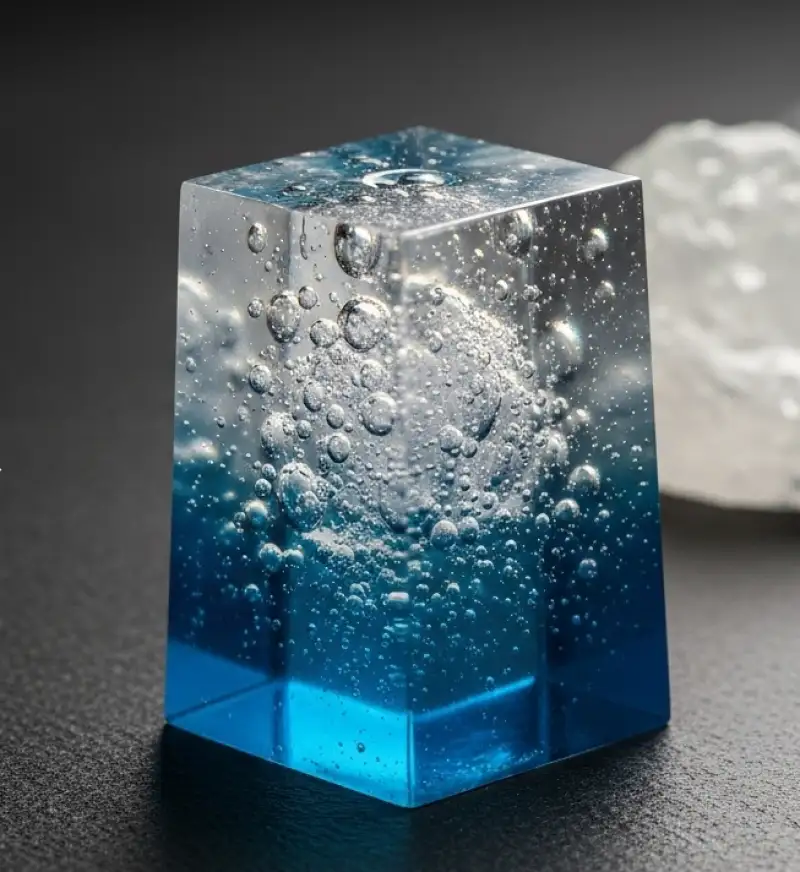Why De-Bubbling the Flask Is Crucial in Resin Casting
In jewelry casting, precision is the defining quality. From the accuracy of your resin model to the control of your burnout cycle, every step matters. Yet, one vital process often overlooked by many casters is de-bubbling the investment flask before it sets.
Whether you are using traditional wax trees or advanced 3D-printed resin patterns, removing trapped air from the investment mixture is essential for achieving a smooth, flawless, and defect-free casting.
The Importance of Proper De-Bubbling
When investment powder is combined with water, countless microscopic air bubbles form within the slurry. If not eliminated, these bubbles cling to the jewelry pattern and stay trapped inside the mold.
During burnout, these air pockets expand, distorting the mold walls and creating imperfections. When molten metal enters the cavity, it fills those voids, producing surface pits, bumps, and other unwanted textures.
For this reason, professional casting setups always rely on a vacuum de-bubbler or investment vacuum mixer to create a dense, uniform mold that captures every fine detail.
What Happens When the Flask Is Not De-Bubbled
If air remains inside the flask, it directly affects the surface quality of the final casting. Below are some of the most common issues caused by poor de-bubbling:
- Surface Pitting: Tiny holes or craters appear on the jewelry’s surface.
- Metal Nodules: Raised bumps form where air bubbles pressed against the model.
- Subsurface Porosity: Hidden air voids weaken the structure beneath the surface.
- Loss of Detail: Intricate prongs, engravings, or edges appear dull or incomplete.
These problems result in unnecessary polishing, wasted material, and even the need for complete re-casting, costing valuable time and resources.
How a Weak Vacuum Pump Can Undermine the Process
Using a weak or poorly maintained vacuum pump can cause as many issues as not de-bubbling at all.
An underpowered pump cannot achieve the proper vacuum level (around -29 inHg / -0.95 bar) needed to extract deep-seated air pockets. When that happens:
- Only surface bubbles are removed, leaving internal air trapped.
- The investment appears smooth on top but contains hidden voids inside.
- Craters, blowholes, and porosity appear after burnout.
- The investment may set unevenly and crack during burnout
Even if your investment mix and ratios are perfect, a weak vacuum system can quietly compromise the entire casting process.
Types of Porosity Caused by Poor De-Bubbling
Porosity created by trapped air is different from shrinkage porosity caused by metal cooling. The main forms include:
- Gas Porosity: Air or gas expands during burnout, forming internal voids.
- Surface Porosity: Small pits or cavities that appear on the outer layer.
- Subsurface Porosity: Air trapped below the surface that reduces structural strength.
These defects often occur even when using premium alloys, showing that the issue lies in the investment preparation, not the metal itself.
How to Avoid These Problems
- Use a High-Performance Vacuum Pump: Make sure your system reaches the proper vacuum pressure. Regularly check oil levels and seals.
- Vacuum Twice: Once immediately after mixing and again after pouring the investment.
- Pour Carefully: Let the investment run down the flask wall instead of pouring directly onto the tree.
- Follow Accurate Mixing Ratios: Use the powder-to-water proportions recommended by your investment manufacturer.
- Maintain Your Equipment: Replace aging hoses, seals, or pumps before they affect performance.
Final Thoughts
De-bubbling may seem like a small step, but it is the foundation of flawless casting. Air trapped inside the flask can cause porosity, surface defects, and wasted effort, all of which are easily avoided with the right vacuum system and technique.
In resin casting, especially when working with fine 3D printed patterns, proper de-bubbling ensures that every curve, texture, and prong is faithfully replicated in metal. It saves time, reduces rework, and enhances both quality and consistency.
At Protospeed, we prioritize precision across every stage of jewelry manufacturing. From ProtoResins’ high-performance castable resins to Protospeed’s state-of-the-art 3D printers, our integrated solutions help you achieve the perfect casting that matches your design vision every time.

